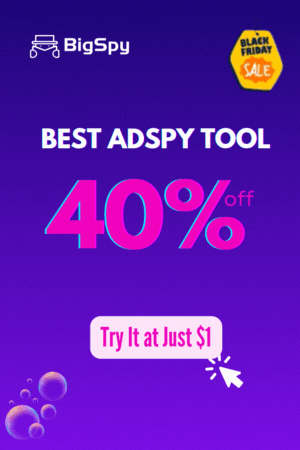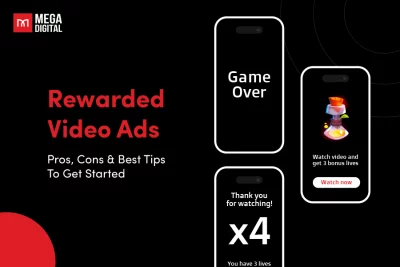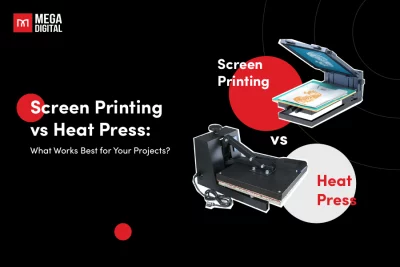When it comes to online marketing, the terms PPC vs SEM often get mixed up, but they offer distinct benefits for businesses. Therefore, understanding the differences can help you make the best choice for your campaign whether you’re looking for quick results or a long-term strategy. In this guide, I’ll break down how PPC and SEM work to find out which one fits your business needs.
Table of Contents
PPC Overview
Definition
Pay-per-click (PPC) is an online advertising model in which advertisers pay a fee each time a user clicks on their ad. This model is mostly used in search engine advertising, such as Google Ads.

With PPC, advertisers select specific keywords to target and create ads that appear in search results or on partner websites. The cost of each click is determined by factors such as keyword competitiveness and ad quality, making PPC a flexible and scalable option for driving immediate traffic to websites while allowing for precise targeting and budget control.
Benefits
PPC comes with several notable benefits:
- Cost-Effective: You only pay when someone clicks on your ad, making it a budget-friendly option that allows you to control your advertising costs.
- Immediate Traffic: PPC campaigns can generate instant traffic to your website, perfect for launching new products or services.
- Enhanced Brand Awareness: Even if users don’t click on your ad, having it appear at the top of search results increases brand visibility and recognition.
- Flexibility and Control: You can easily adjust your campaigns based on performance metrics, including budget, keywords, and targeting options, to optimize results.
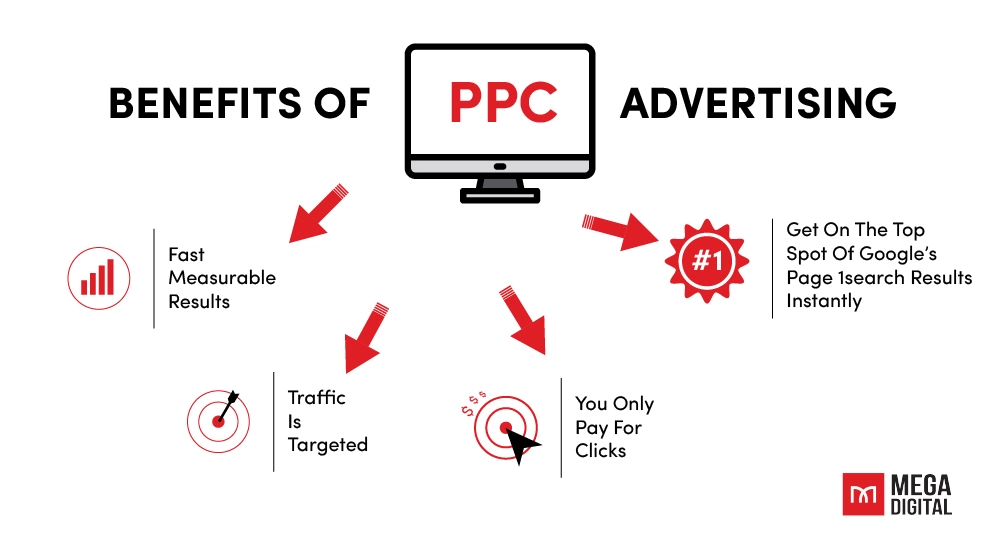
When to use PPC?
PPC is best used when you want fast traffic and complete control over your budget. For example, let’s say you’re launching a new smart home gadget and you use Google Search Ads to target keywords like “best smart thermostat.” This ensures that people actively searching for smart home devices see your ad at the top of the results and drive highly relevant traffic to your site.
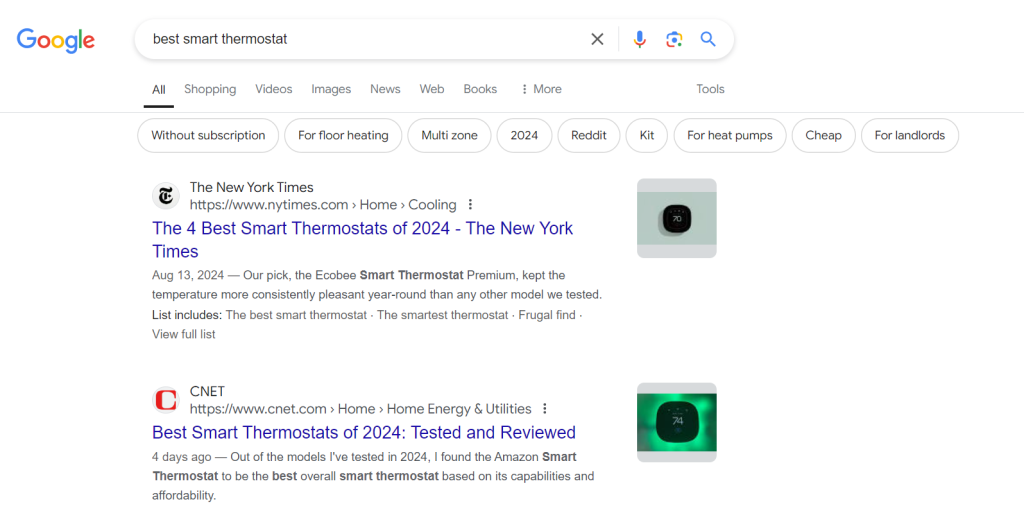
This ad strategy is also ideal for limited-time offers. If your e-commerce store is running a 48-hour flash sale, using a Google Search Ad for “best deals on running shoes” helps ensure that your promotion is seen by people who are ready to buy. You can set a daily budget to avoid overspending, and since you only pay for clicks, the cost is controlled.
Another great use for PPC is testing new keywords. For instance, if you’re not sure which terms work best for your audience, you can run a small-scale Google Search Ad campaign with variations like “top running shoes” versus “affordable running shoes,” monitor the results, and adjust your strategy based on what drives the most clicks and conversions.
SEM Overview
Definition
Search Engine Marketing (SEM) is a digital marketing strategy that involves promoting websites by increasing their visibility on search engine results pages (SERPs) through paid advertising.
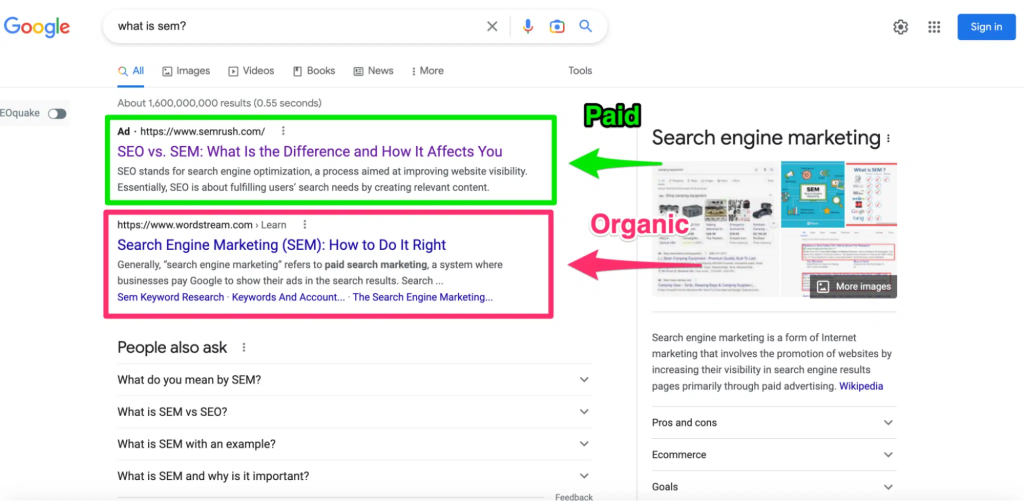
This typically includes the creation and management of PPC campaigns, where advertisers bid on keywords relevant to their target audience. The goal of SEM is to drive targeted traffic to a website, thereby enhancing its reach, engagement, and conversion rates.
Benefits
Here are some benefits of SEM that you should consider:
- Increased Visibility: By placing ads at the top of search results, you attract more attention and drive more traffic to your site.
- Targeted Audience: SEM allows you to reach specific audiences based on keywords, location, and demographics, ensuring that your ads are seen by people most likely to be interested in your offerings.
- Measurable Results: You can track the performance of your SEM campaigns in real-time, enabling you to adjust your strategies for better outcomes.
- Quick Results: Unlike organic search strategies, SEM can provide immediate visibility and traffic, making it ideal for time-sensitive promotions.
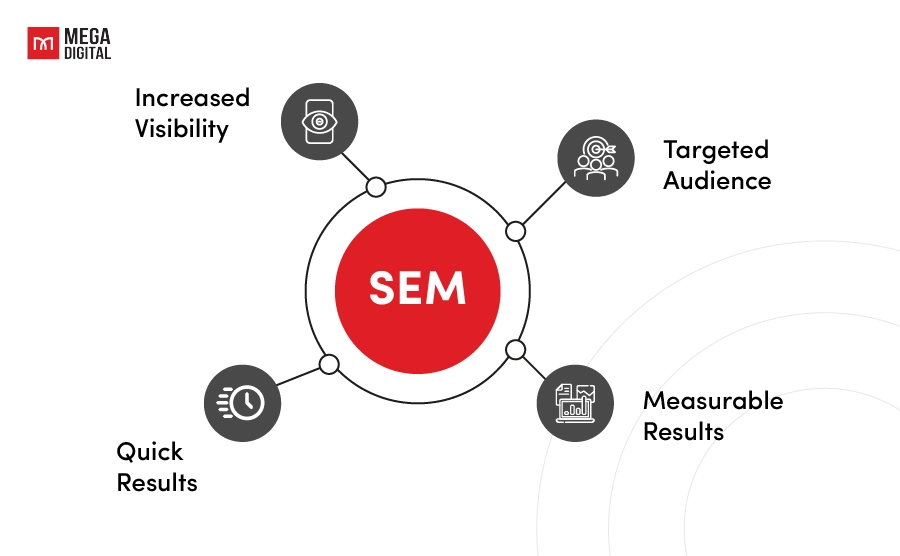
When to use SEM?
You should use SEM if you need quick visibility, want to promote new products or services, or are running time-sensitive campaigns such as seasonal sales. It’s especially useful when you need to reach customers actively searching for specific keywords and can’t wait for organic SEO to show results.
Now, let’s say you’re launching a Christmas sale campaign and want local customers to know about it right away. You can promote a limited-edition winter collection with Google Shopping Ads, focusing on search terms like “holiday outfits” or “Christmas sweaters sale.”
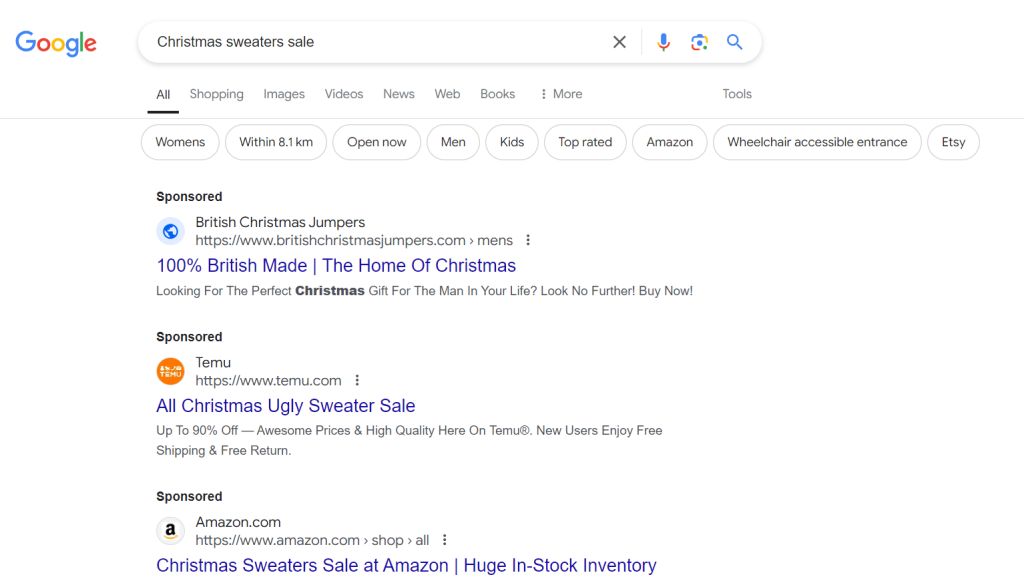
With promotion extensions highlighting discounts and ad scheduling set for peak shopping times, your ads reach more shoppers when they’re actively browsing for gifts. Then, you can use tracking conversions to see how well the campaign is performing and adjust the budget to maximize results.
PPC vs. SEM: What’s the Difference?
PPC and SEM are often confused, but they serve different purposes. While PPC is all about paid ads, SEM is the bigger picture, which includes both PPC and organic SEO strategies to increase visibility on search engines.
Here are some major differences between PPC and SEM that you should consider:
Targeting Options
Cost
SEM
SEM involves a mix of SEO strategies and paid ads, so it requires time and effort to create high-quality content and optimize it for search engines.
However, the standout of SEO – driven SEM is that once your content ranks on search engines, you’ll receive traffic without paying for every click. It’s a long-term investment that pays off as organic rankings improve over time.
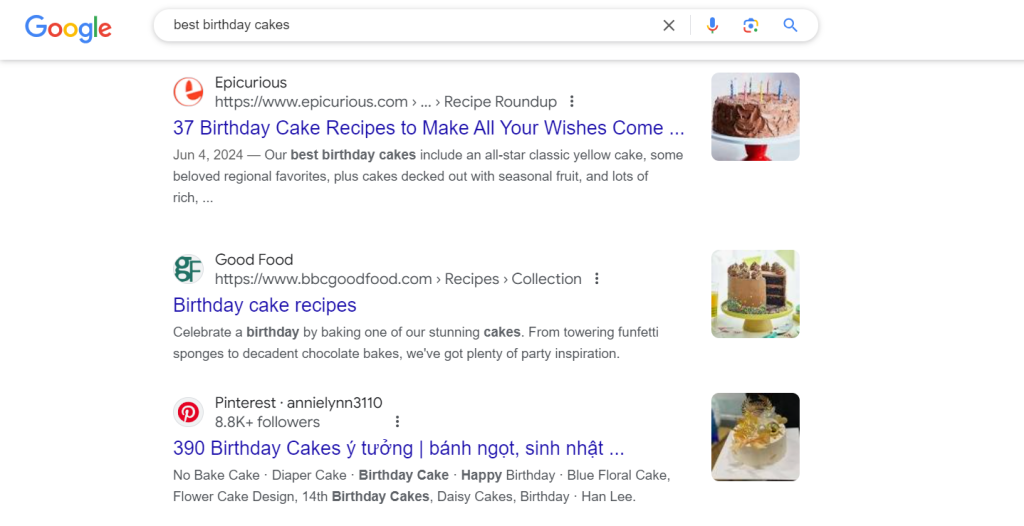
For example, a bakery that invests in optimizing blog content around keywords like “best birthday cakes” and “how to decorate cakes at home” can gradually build up organic traffic. Once the content ranks on Google’s first page, the bakery continues to benefit from consistent traffic – without paying per click.
PPC
With PPC, you’ll pay each time someone clicks your ad, which means costs can add up quickly. The price varies based on industry competition and keyword demand. For less competitive sectors, clicks might cost around $1–$2, but in highly competitive fields like legal services, clicks can exceed $50.
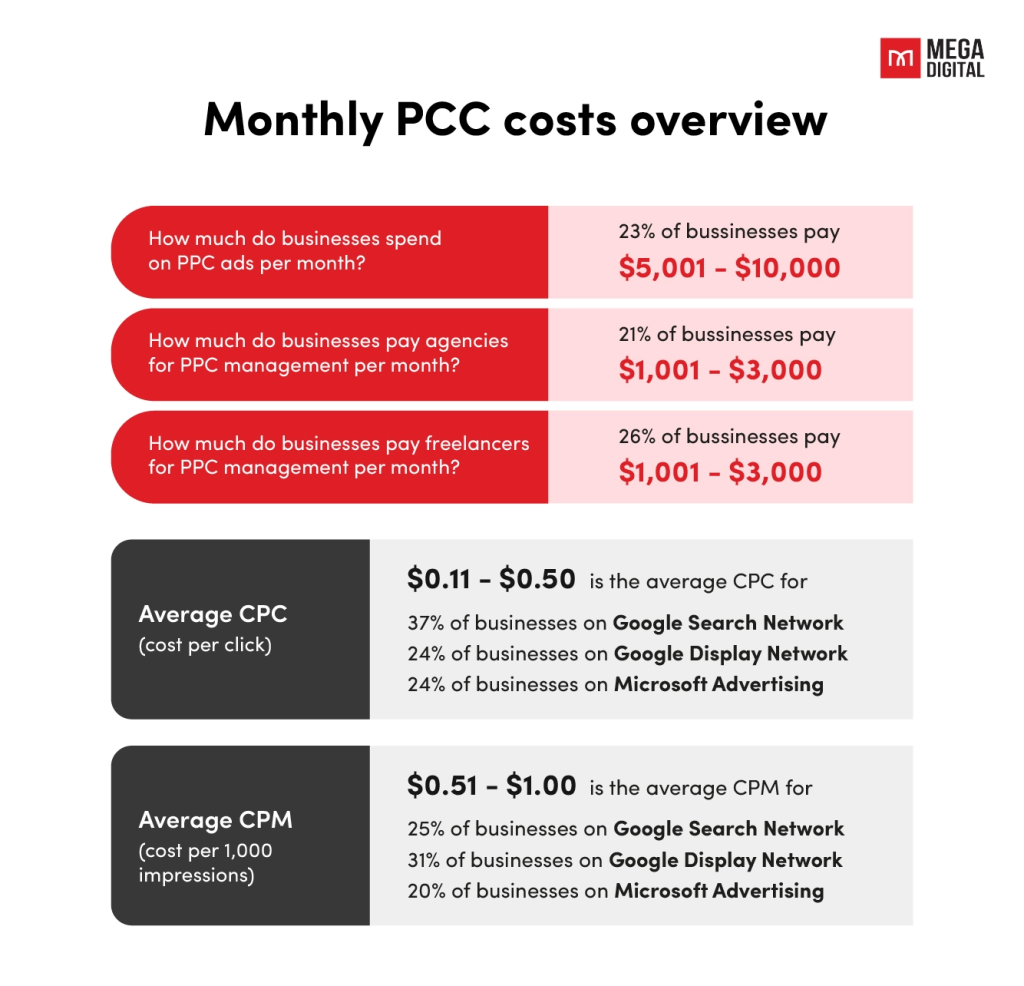
Continuing with the bakery example, if the bakery runs PPC ads targeting “best birthday cakes near me,” it may pay $3 per click. If 100 users click the ad, the campaign costs $300 for that month.
Conclusion
SEM tends to be more cost-effective over time due to free organic traffic, while PPC offers immediate results but can become costly, especially in competitive industries. Thus, SEM is usually a better option if you’re seeking consistent, sustained traffic at a reduced long-term cost.
Keyword Research Approaches
SEM
SEM takes 3 to 6 months (or longer) to show noticeable results, making it a long-term strategy since businesses need to regularly optimize content and compete with others aiming for the same top spots. In highly competitive industries, a year or more of consistent effort may be needed before seeing improvements.

For example, a law firm aiming to rank for “best personal injury lawyer” might spend months creating in-depth guides, earning backlinks, and refining their SEO strategy to compete with other firms that have been optimizing their content for years.
PPC
PPC delivers immediate results, making it perfect for businesses looking to attract traffic quickly. Once you launch a campaign, your ads can start generating clicks within a few hours. This makes PPC ideal for time-sensitive campaigns or product launches.

For example, the same law firm could run a Google Ads campaign targeting “best personal injury lawyer,” gaining instant visibility and potentially receiving 50–100 clicks in a few days without waiting months.
Conclusion
In conclusion, if you need quick traffic, PPC is the way to go. However, if you have the time to invest in long-term growth, SEM can offer more sustainable results.
Targeting Options
SEM
SEM helps businesses attract users organically through content that aligns with search intent. You can’t control audience demographics directly through SEO, but creating the right type of content helps your business reach people searching for relevant topics.
For example, a fitness brand using SEM might create content around keywords like “best home workout routines” to attract searchers who are actively looking for fitness advice.
PPC
PPC provides precise targeting options, allowing businesses to choose who sees their ads based on location, device, time of day, or user behavior. You can also target audiences who have previously interacted with your business using remarketing strategies.
For example, that same fitness brand could run a PPC campaign targeting women aged 25–34 in New York City interested in fitness products, ensuring its ads are seen by the right audience at the right time.
Conclusion
SEM casts a broader net with organic content, while PPC offers pinpoint accuracy for targeting specific demographics.
Content
SEM
The content strategy for SEM focuses on long-form, informative pieces. Businesses often create blog posts, how-to guides, or product reviews to engage users and rank higher on search engines. SEM content builds authority and trust with users over time.

For example, a beauty brand optimizing for the “best skincare routine for dry skin” could create a detailed article with tips and product recommendations. Over time, this post could rank organically and drive traffic consistently.
PPC
PPC content needs to be short, persuasive, and action-oriented. Ad copy must quickly grab attention and include strong CTAs to encourage immediate clicks. The goal is to generate instant traffic rather than build long-term engagement.
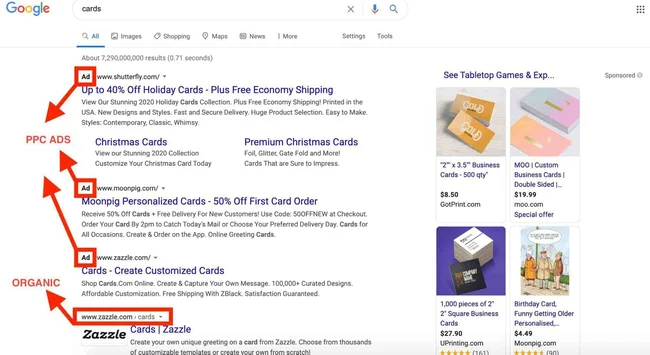
For example, an ad promoting a skincare product might say, “Get 20% Off Today – Limited Time Offer!” to drive users to purchase immediately.
Conclusion
SEM content focuses on long-term engagement, while PPC content is designed to prompt quick actions and conversions.
Longevity
SEM
The standout of SEM lies in its longevity. Once your SEO efforts start paying off, your content can continue generating traffic with little additional effort. Even after you stop optimizing, well-ranked content can keep bringing in visitors for months or years.
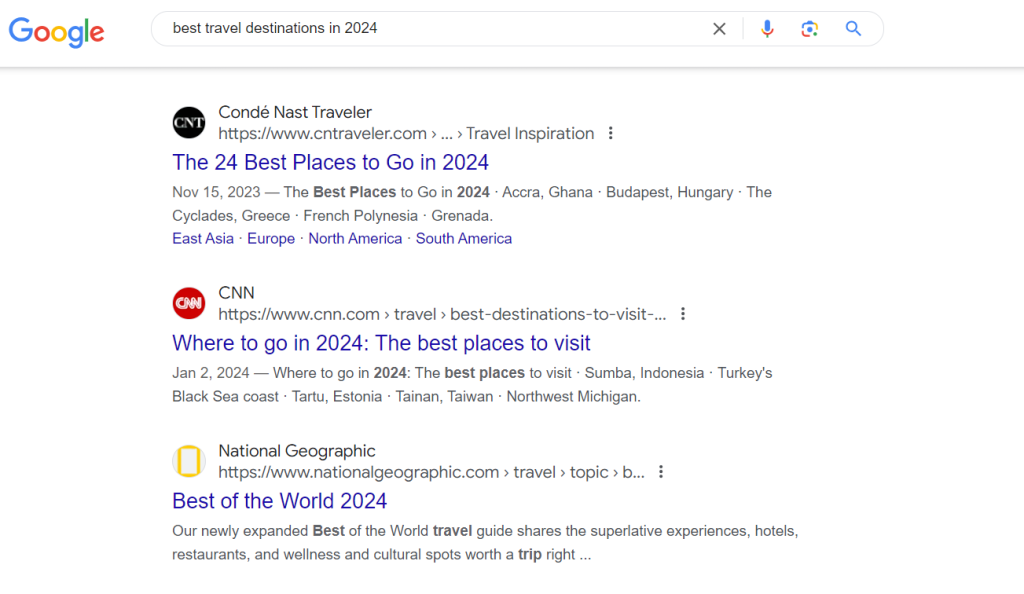
For example, a travel agency that ranks for “best travel destinations in 2024” can expect organic traffic every year, especially if the content remains relevant.
PPC
PPC campaigns offer immediate but short-lived results. As soon as the campaign ends, the traffic stops. This makes PPC great for promotions or flash sales but less effective for building sustained traffic over time.
For example, a travel agency promoting a limited-time discount on vacation packages might see a spike in traffic during the campaign. However, once the ads stop, the traffic disappears unless they launch new campaigns.
Conclusion
SEM provides long-term traffic sustainability, while PPC is ideal for short-term visibility and quick wins.
Mega Digital’s Tips for Choosing between PPC and SEM
When deciding between PPC and SEM, it’s easy to get overwhelmed by the options. To make the right choice, you need a strategy that matches your business goals, budget, and timeline. Here I will give you some tips on how you can make a confident decision, step by step.
Set Your Marketing Goals
First of all, you need to define what you want to achieve. If you’re focused on short-term results, such as boosting sales for an upcoming Black Friday event, PPC is a smart choice.
For example, many e-commerce brands use Google Ads PPC campaigns to drive traffic to product pages during peak shopping seasons since PPC ads start showing instantly, you can see immediate results.
However, if your goal is to build long-term brand visibility, SEM is more effective. For instance, a small business offering digital services might focus on optimizing its website for SEO – a key component of SEM. Over time, appearing on the first page of Google for key search terms will bring consistent, organic traffic without ongoing ad spend.
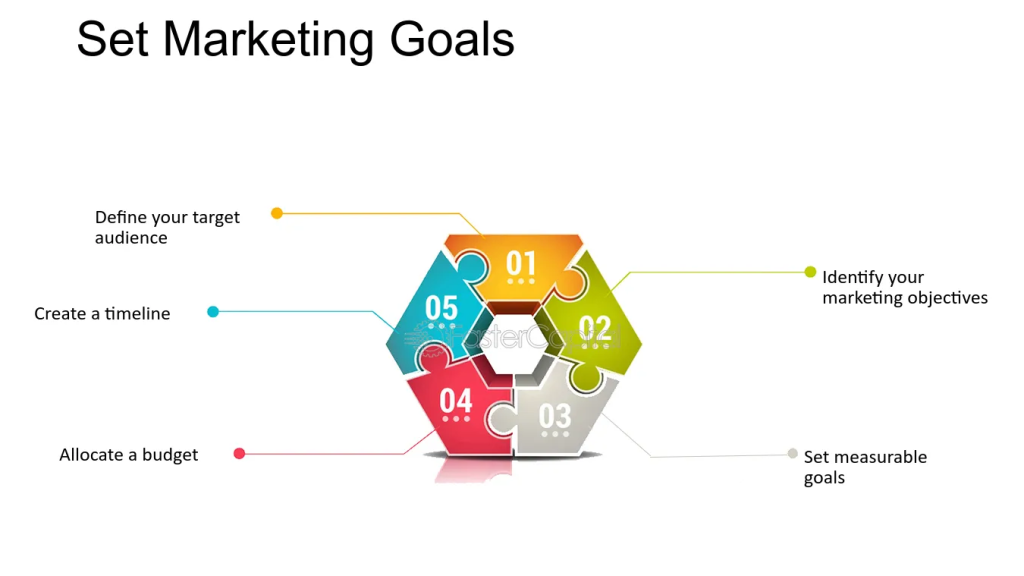
Quick Tip: If your marketing goal involves both fast sales and long-term presence, you can run PPC ads to promote sales while developing SEO for sustained visibility.
Create a Budget for Your Campaign
Next, your budget plays a big role. PPC requires direct spending, with costs tied to clicks.
For example, running a Google Ad targeting “fitness trackers” may cost you $2-4 per click. If you plan to spend $1,000, you can control how quickly that amount is used by adjusting daily limits. The trade-off is that once your budget runs out, the traffic stops.
On the other hand, SEM (including SEO) requires an upfront investment in content creation and technical optimization. Hiring an SEO expert to write blogs and improve your site’s structure might cost $2,000 initially, but the benefits can last for months or even years without additional costs. For example, if a food blog ranks high for “quick vegan recipes,” that page could bring traffic long after the SEO work is done.
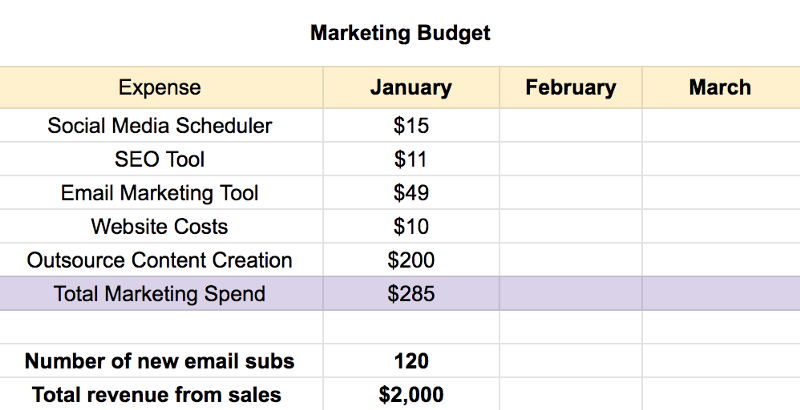
Quick Tip: If you need to stretch your budget, consider a hybrid strategy using PPC to jumpstart traffic while your SEO efforts mature.
Consider Your Team’s Process
Your choice also depends on your team’s expertise and bandwidth and running PPC campaigns requires constant monitoring.
For example, when running a marketing campaign, your team will need to adjust bids, monitor keyword performance, and tweak ads based on conversion rates. If you have a data-savvy marketing team, PPC can be highly effective.
If your team is more comfortable with content creation and long-term planning, SEM might be a better fit.
Think about a small team that enjoys writing blogs, creating videos, and building backlinks. They might find more success with an SEM strategy because their strengths align with the demands of SEO.
Additionally, SEM doesn’t require the daily monitoring that PPC does., Once the content is optimized, you only need occasional updates.
Consider Time Limits
Finally, time constraints can be the deciding factor. If you’re in a hurry to hit a target like generating 100 leads by the end of the month, PPC is your best bet.
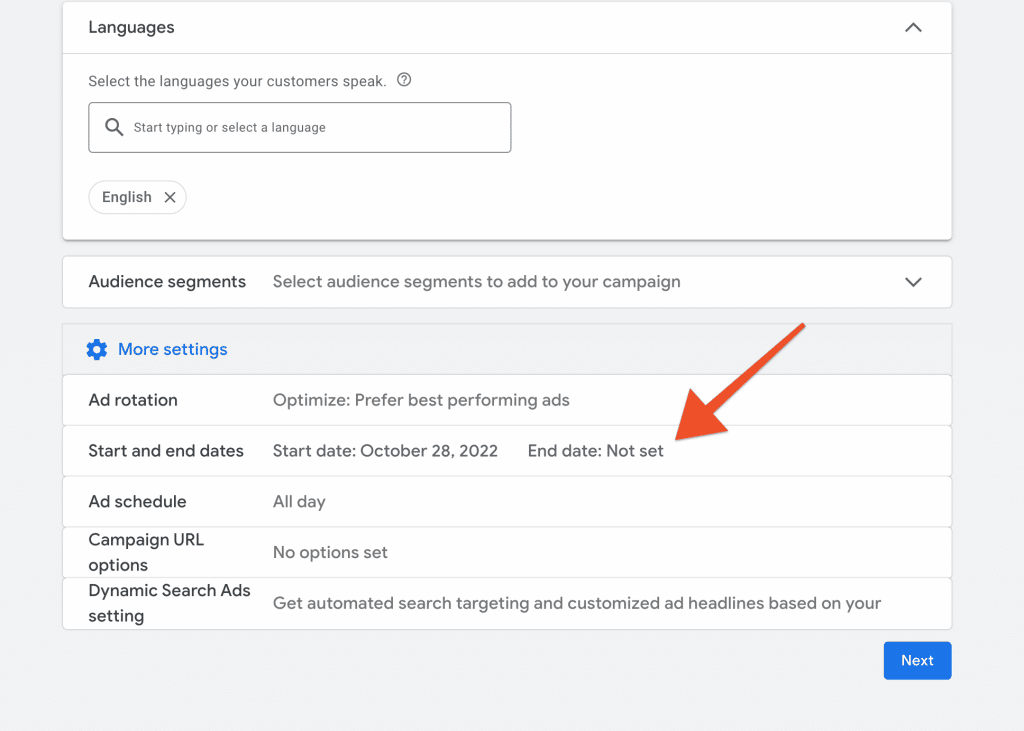
For example, a home improvement company might run a Google Ads campaign offering a discount on kitchen renovations, knowing the ads will attract leads within days.
In contrast, SEM works best when you have time to build momentum gradually. It can take several months for SEO efforts to improve your ranking.
A tech startup, for instance, might use SEM to position itself as a thought leader by publishing in-depth articles and optimizing keywords related to its niche. Over time, they’ll gain steady traffic from users searching for solutions in that field.
PPC vs SEM: Which One is Better for Your Business?
When deciding between PPC and SEM, consider your business goals, budget, and timeline. PPC is ideal if you need immediate traffic, such as for time-sensitive promotions or new product launches. It allows for precise targeting and can generate clicks almost instantly, making it a powerful tool for driving short-term results.
On the other hand, SEM offers a more sustainable approach, focusing on both SEO and quality content creation. If your business is looking for long-term growth and consistent organic traffic, investing in SEM will likely yield better results over time. While it requires patience and continuous effort, the benefits of organic visibility can significantly outweigh the costs in the long run.
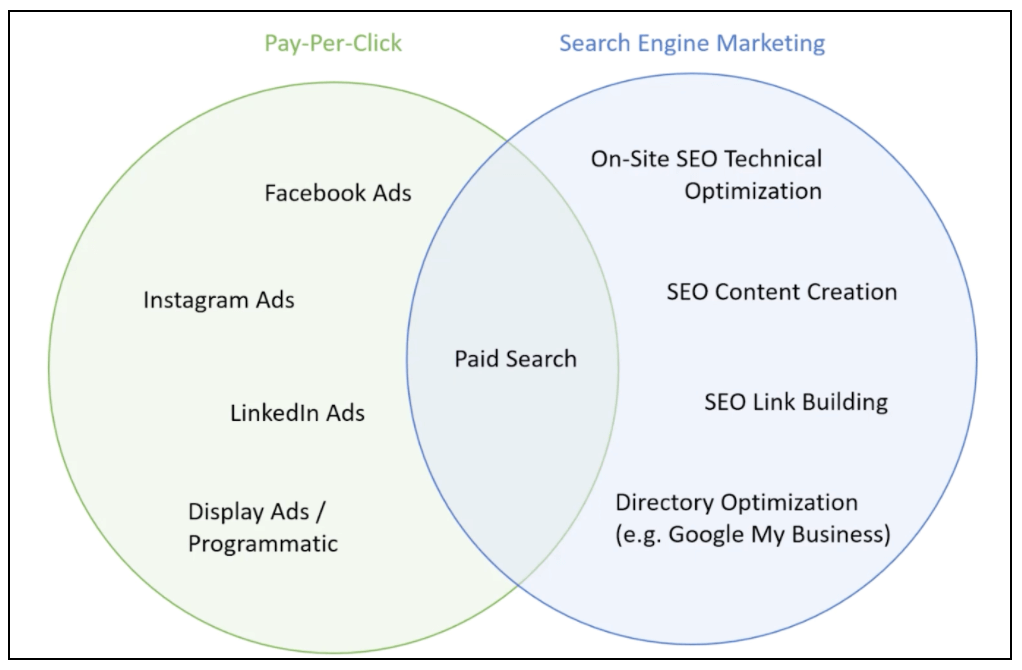
Ultimately, businesses may find a combination of both strategies effective – using PPC for immediate gains while simultaneously investing in SEM to build a robust, long-term presence online. Choose the approach that aligns best with your current needs and future goals, ensuring that you’re prepared to adapt as those needs evolve.
If you’re ready to dive deeper into the world of PPC and SEM, talk to Mega Digital! Our team is here to guide you in finding the right approach for your business and maximizing your online presence.
Conclusion
After analyzing all the key differences between PPC vs SEM, it’s clear that both have their place depending on your business goals. While PPC drives fast results, SEM builds long-term growth. The key is to find the right balance for your strategy. If you’re unsure where to start, Mega Digital can help you create a plan that aligns with your unique needs.





